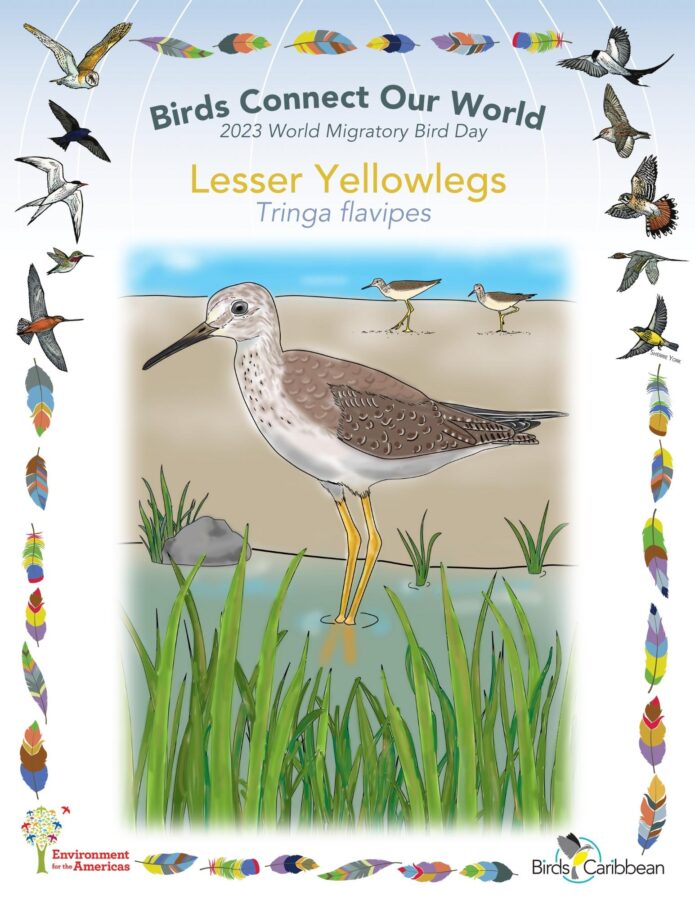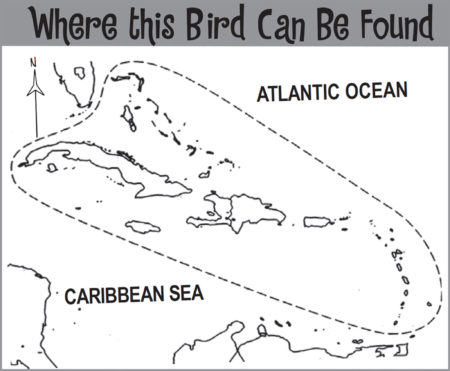Celebrate World Migratory Bird Day (WMBD) with us in 2023! This year’s theme is “Water: Sustaining Bird Life”. Have fun learning about a new migratory bird every day. We have coloring pages, puzzles, activities, and more. Download for free and enjoy nature with your family at home.
Migratory Bird of the Day: Lesser Yellowlegs
With their long bright-yellow legs, you might spot these elegant shorebirds at the water’s edge searching the shallows for food. Lesser Yellowlegs are mottled grayish-brown above, with pale underparts. These slender-looking, long-billed birds can be easy to pick out from the crowd with their distinctive leg color. However, take care as this shorebird has a ‘cousin’—the Greater Yellowlegs!
Greater Yellowlegs are much larger and more heavily built. If you spot the two together, you’ll be in no doubt as to who is who. But you can also pick out Lesser Yellowlegs from its relatively shorter bill-length compared to Greater Yellowlegs. Lesser Yellowlegs also have a distinctive whistled “tu-tu” call, typically one or two notes, while the Greater Yellowlegs call is a stronger “tu-tu-tu!” of 3 to 4 notes. You can find more ID tips in our video here.
Lesser Yellowlegs breed in the Boreal forests in the far north of North America. They head south after breeding, making amazing migratory journeys of thousands of kilometers. They can start to arrive in the Caribbean from July and August. Some Lesser Yellowlegs will continue on to South America, but others will spend the winter here. Lesser Yellowlegs can be found in wetlands, both freshwater and on the coast. They show up on mud flats, ponds, lagoons, and on mangrove edges. They will also use agricultural areas, with flocks of thousands of individuals sometimes using flooded rice fields.
Lesser Yellowlegs are one of the most common shorebirds using the Atlantic Flyway. They are currently listed as “Least Concern” by the IUCN. Sadly, however, Lesser Yellowlegs populations have declined by a shocking 63-70% since the 1970s! Loss of habitat, climate change, and unsustainable hunting and trapping at several non-breeding locations have all contributed to this decline. Conserving our Caribbean wetlands will help Lesser Yellowlegs and many other species. They provide food-rich havens for birds to refuel on migration or to spend the winter. Learn more about this species, including its range, photos, and calls here.
Color in the Lesser Yellowlegs
Download the Migratory Birds of the Day Coloring Page! Use the picture above and the photos on this page as your guide, or you can look up pictures of the bird online or in a bird field guide if you have one. Share your colored-in page with us by posting it online and tagging us @BirdsCaribbean #WMBD2023Carib
Listen to the calls of the Lesser Yellowlegs
The calls of the Lesser Yellowlegs are a whistled “tu-tu” with one or two notes, often repeated rapidly.
Puzzles of the Day
Click on the images below to do the puzzle. You can make the puzzle as easy or as hard as you like – for example, 6, 8, or 12 pieces for young children, all the way up to 1,024 pieces for those that are up for a challenge!
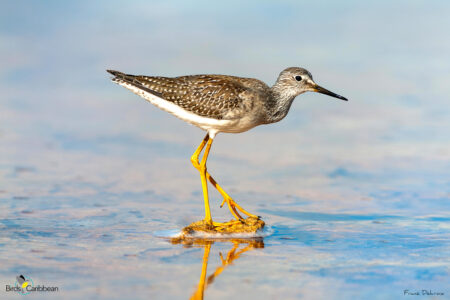
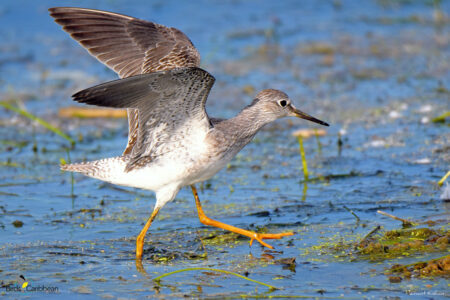
Activity of the Day
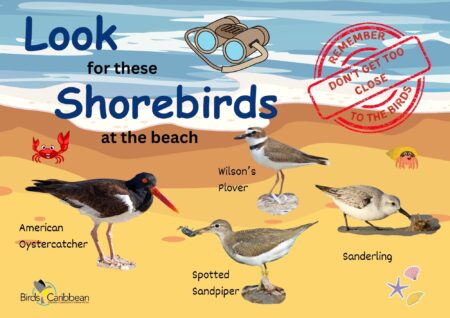 FOR KIDS: Birds, like the Lesser Yellowlegs, that are typically found at the shore and other coastal habitats like mudflats and lagoons are called shorebirds.
FOR KIDS: Birds, like the Lesser Yellowlegs, that are typically found at the shore and other coastal habitats like mudflats and lagoons are called shorebirds.
These birds come in different sizes and shapes. They are always on the move, checking the shoreline for food. They have special bills that help them poke into the mud or sand and in between rocks. Their bills and leg lengths are different depending on what they eat and where they find their food. All of this can help us to identify them!
Why not go Birding at the beach? Or at any other wetland! We have made some suggestions of who you can look out for whilst you’re there. You can also download and print out our handy guide to help you identify the different types of shorebirds we find in the Caribbean. You can find more helpful tips, activities and video on our Shorebird Resources page.
FOR KIDS AND ADULTS: Enjoy these videos of Lesser Yellowlegs
Read all about the fascinating work tracking Lesser Yellowlegs: Biologist Laura McDuffie has tracked the movements of these long distance migrants as they travelled to and from their breeding areas. Find out more about Laura’s work, the amazing journeys that Lesser Yellowlegs make each year and the threats they face along the way!
You can FIND OUT MORE ABOUT LESSER YELLOWLEGS AND HUNTING IN THE CARIBBEAN IN THIS SHORT VIDEO

